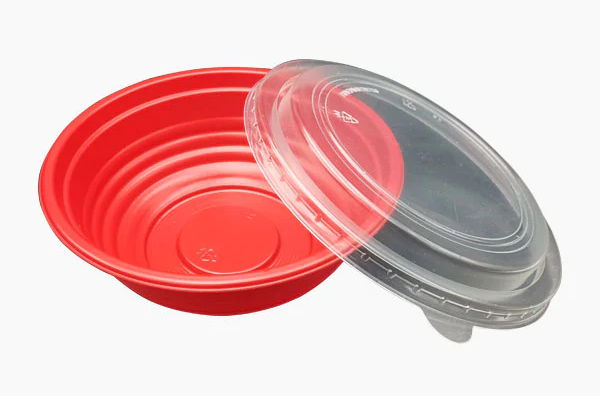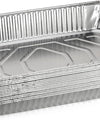Recent Post
Archive
- August 2024
- June 2024
- April 2024

Understanding the Materials Used in Biodegradable Bowls and Plates
Simon Chua
Aug 11, 2023
As sustainability grows in focus around the world and consumers become more eco-conscious, traditional disposable food packaging options are being phased out in favour of more sustainable solutions. Amidst this trend, biodegradable bowls and plates have gained popularity as a food packaging solution that entails a reduced environmental impact.
Thus, if you run a food business, whether it is a restaurant or manufacturing operation, you should consider the use of biodegradable cups and plates, as this will not only reduce your environmental footprint, but also improve customers’ perceptions of your business. A variety of materials are used to produce these biodegradable food packaging options, ranging from all-natural options such as sugarcane bagasse to bioplastics such as polylactic acid. Here is some insight into the different types of materials used in biodegradable bowls and plates, with a look at their contents and manufacturing process, to help you decide which option is best suited for your business requirements.
Sugarcane Bagasse
Sugarcane bagasse biodegradable packaging is one of the more common options when it comes to biodegradable bowls and plates. In the extraction of sugarcane, biodegradable bagasse is a by-product that remains in the form of a pulpy, fibrous material. It is often used as a fuel, but the use of sugarcane bagasse in biodegradable products is also gaining popularity, as this plant-based fibrous material can be shaped as required and decomposes easily.
As the fibres are moulded and hardened into shape, bagasse-based products are sturdy, making them ideal for biodegradable food trays. They are also heat-resistant, allowing them to be used for storing either hot or cold foods. Additionally, they can be used in ovens and microwaves, providing additional versatility as a food packaging solution. The biodegradable bowls and plates manufactured from bagasse have a brown colour, similar to paper-based packaging, which also allows customers to visually identify that they are a more sustainable option.
The sustainability of bagasse-based products stems not only from the fact that bagasse is a plant-based material that decomposes naturally without leaving behind environmentally harmful residue. Due to it being a natural by-product of the sugarcane extraction process, there is a lower carbon footprint involved with manufacturing bagasse-based products, making them more feasible as an eco-friendly option.
Palm Leaf
Another oft-used material in biodegradable plates and bowls is the leaves of the Areca palm tree, which is commonly grown across Southeast Asia. The fallen leaves are collected without any harm to the trees, after which they are cleaned and heat-pressed to produce biodegradable packaging products. These products have a unique aesthetic appeal, making them stand out further as a sustainable packaging solution. They are also quite durable and can be used multiple times after a simple washing.
The sustainability of such palm-based products largely stems from the fact that fallen leaves are used to produce them, meaning they do not require cutting down any vegetation. Additionally, the manufacturing process to create packaging from this material uses only steam and heat, resulting in minimal energy consumption, and it does not require any chemicals to be added. This also ensures that these products are free of harmful substances, making them well-suited for food packaging.
Being made of a natural substance, palm leaf products are biodegradable and decompose over a few months when composted. This allows them to be used to enrich the soil and encourage the growth of more plants after their disposal.
However, it should be noted that this does not occur as easily if they are simply disposed of into the environment. As they require high temperatures to decompose fully, palm leaf products should be disposed of in an industrial composting facility and not in a general waste bin. Ideally, you should communicate this to your consumers to ensure they dispose of these products properly.
Polylactic Acid (PLA)
Polylactic acid (PLA) is a bioplastic that is typically made from starch and sugar extracts from plants such as sugarcane or corn. These extracts are fermented to produce lactic acid, which is then turned into PLA and then combined with other materials to create packaging products such as biodegradable bowls and plates.
These products have a very similar appearance and share many properties with plastic. They are sturdy, can be either transparent or opaque, and are able to be produced in different colours. PLA bowls and plates are better suited for storing cold or lukewarm food items, as they have a lower heat resistance compared to certain other materials.
However, similar to palm leaf-based products, PLA containers need to be disposed of in a composting environment with the right temperature and moisture so that they can be broken down effectively. This makes them somewhat less viable in terms of sustainability, although this can be overcome by reminding consumers about proper disposal.
Laser Packaging: Your Source for Biodegradable Bowls and Plates
If you want to uplift your brand, appeal to consumers, and reduce your environmental impact by switching to biodegradable packaging materials, Laser Packaging has what you need. Our range of biodegradable bowls and plates offers you cost-effective and environmentally friendly packaging solutions that can give you the edge over your competition. Contact us today for high-quality, sustainable packaging!← Older Post Newer Post →



